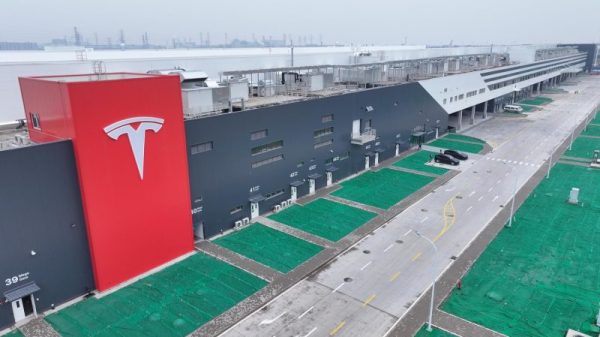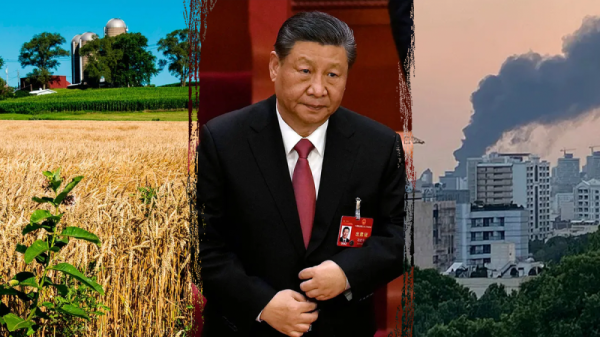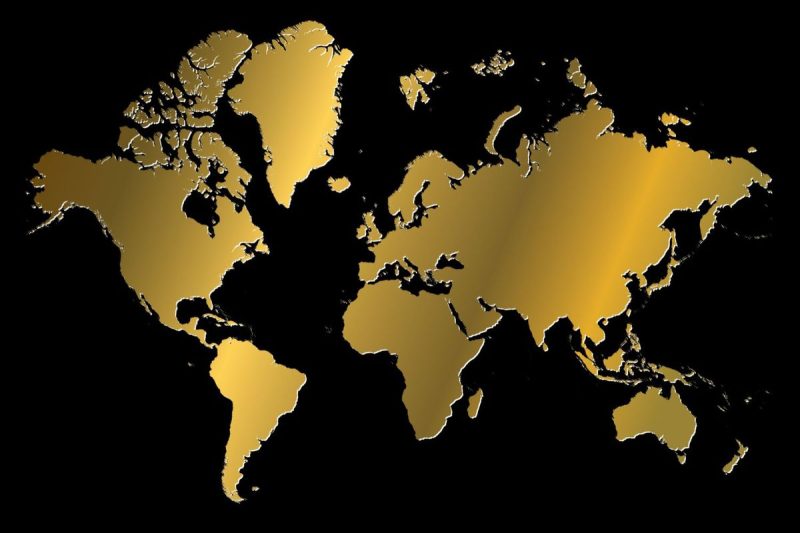The gold price has tracked higher in the past few years, sparking interest in the biggest producers.
Gains for the precious metal have come against a backdrop of turmoil caused by the COVID-19 pandemic, geopolitical conflicts and rising interest rates as nations try to battle high levels of inflation.
These circumstances have prompted some investors to add gold to their portfolios as a safe-haven asset. In particular, central banks have emerged as strong buyers of the yellow metal, lending support to its price.
1. China
Mine production: 370 MT
While China’s gold output peaked at 455 MT in 2016, it hasn’t dipped below 300 MT in more than a decade. This consistent production continues to ensure the Asian nation’s status as the world’s top gold producer.
Despite encouraging foreign investment through the late 1990s and early 2000s, China’s gold-mining industry is dominated by state-owned operators. Some of the largest companies include China Gold International Resources (TSX:CGG,HKEX:2099), Shandong Gold (HKEX:1787) and Zijin Mining Group (HKEX:2899).
China also hosts major gold-smelting operations. Its Belt and Road Initiative has resulted in Chinese companies exploring and developing sites elsewhere in Asia and Africa, subsequently sending raw resources back to China for refinement.
In addition to being the top producer of gold in 2023, China’s central bank was the largest buyer of the precious metal, adding 225 MT to its coffers during the year to bring its total to 2,235 MT.
2. Australia
Mine production: 310 MT
Australia’s 2023 gold production was largely on par with last year, dipping from 314 MT down to 310 MT.
Gold is mined at a slew of major operations in the country, with the top five gold mines all located in different states. The top-producing mine is top producer Newmont’s (TSX:NGT,NYSE:NEM) Boddington mine in Western Australia, which produced 589,000 ounces through the first three quarters of 2023.
Hosting the world’s largest gold reserves at 12,000 MT, Australia has an important role in the global supply of the yellow metal. It contributed AU$24 billion to the Australian economy in the 2022/2023 period.
2. Russia
Mine production: 310 MT
Gold production from Russia came in at 310 MT in 2023, the same as the prior year. The country’s output has risen fairly significantly since 2017, when it produced only 255 MT of gold.
The US Geological Survey states that Russian gold reserves stand at 11,100 MT, making it the second largest country for reserves after Australia. However, despite high production and reserves, Russian gold has had problems reaching world markets since the country’s invasion of Ukraine in February 2022. In response, Russian operators have sought out alternative markets, particularly the BRICS nations and other Asian countries like Kazakhstan.
4. Canada
Mine production: 200 MT
For 2023, gold production in Canada was down a marginal 6 MT from 2022. Canada’s gold output has been on the rise in recent years, moving up consistently from 175 MT in 2019.
Ontario and Quebec are the largest gold-producing provinces in the country; together, they represent more than 70 percent of Canada’s gold output. The Canadian government states that gold is the nation’s most valuable mined commodity, with domestic exports reaching C$22.34 billion worth of the precious metal in 2022.
Additionally, BC’s Golden Triangle is a hotbed for exploration. The region hosts Newmont’s Brucejack gold mine and Red Chris copper-gold mine, the latter of which is a 70/30 joint venture with Imperial Metals (TSX:III,OTC Pink:IPMLF). Junior companies like Goliath Resources (TSXV:GOT,OTCQB:GOTRF) have also made significant discoveries in the region, which has further fueled optimism about the region’s potential.
5. United States
Mine production: 170 MT
In 2023, the US produced 170 MT of gold, down slightly from the 173 MT it produced in 2022. While that is a marginal decrease, it continues a trend of production declines from 2017, when the US produced 237 MT of gold.
According to the US Geological Survey, the top state for production of the yellow metal was Nevada, which accounted for 73 percent of total domestic production, followed by Alaska with 13 percent. The top 27 operations in the country were responsible for 97 percent of American gold output in 2023.
An assessment of US gold resources shows that the country has approximately 33,000 MT of gold in identified and undiscovered resources. The US Geological Survey notes that close to a quarter of the gold in undiscovered resources can be found in copper porphyry deposits. Gold reserves in the US are estimated at 3,000 MT.
6. Kazakhstan
Mine production: 130 MT
Kazakhstan’s 2023 gold output of 130 MT represents continued growth in the country’s production of the yellow metal, up from just 69 MT produced in 2016. Kazakhstan’s largest gold-mining operation is the Altyntau Kokshetau mine, which is owned by mining giant Glencore (LSE:GLEN,OTC Pink:GLCNF).
In August 2023, Anglo-Russian company Polymetal International (AIX:POLY), one of Kazakhstan’s largest producers, delisted from the London Stock Exchange in a move geared at severing the link between its Kazakhstan and Russian subsidiaries; it did so in response to tensions resulting from Russia’s invasion of Ukraine. It remains listed on the Astana International Exchange in Kazakhstan and has major operations in the country.
7. Mexico
Mine production: 120 MT
Mexico has a long history of gold production; in fact, the Spanish colonization of Central America in the early and mid-1500s was largely targeting gold and silver. Today, Mexico is among the global leaders in gold production, extracting 120 MT in 2023. Precious metals account for 50 percent of the country’s total metal output.
While much of Mexico’s gold output is controlled by foreign entities, one of the largest operations, the Herradura mine — owned by Mexico City-based Fresnillo (LSE:FRES,OTC Pink:FNLPF) — produced 355,485 ounces of gold, or about 10.08 MT, in the company’s 2023 fiscal year. The mine represents more than half of Fresnillo’s gold production and generates about a quarter of the company’s total adjusted revenue.
8. Indonesia
Mine production: 110 MT
The mining industry is one of Indonesia’s most important sectors, and the country is among the world’s top producers of nickel, copper and gold. In 2023, the country produced an estimated 110 MT of gold, up 5 MT over the prior year.
Indonesia is home to several large gold operations. The largest is the Grasberg Mining District, a joint venture between Freeport-McMoRan (NYSE:FCX) and Indonesia’s state-owned Indonesia Asahan Aluminium. In 2023, the area produced 1.98 million ounces of gold, or 56.1 MT; it has an estimated 23.9 million ounces contained in mineral reserves.
9. South Africa
Mine production: 100 MT
In 2023, South Africa produced 100 MT of gold, up from 89 MT in 2022. An estimated one-tenth of global gold reserves are located in the country, and its Witwatersrand Basin is one of the largest gold resources in the world.
South Africa has been a top gold producer for decades, but between 1980 and 2018 the nation’s gold output fell by 85 percent. In recent years, South Africa has been the site of conflicts between the Association of Mineworkers and Construction Union (AMCU) and gold producers in the area. The AMCU has held many protests and strikes at several gold and platinum mines in the hopes of garnering more wages and stopping any mergers that could cause job losses.
Power outages have been creating further strife for South Africa’s gold industry. Limited power generation in the country has caused rolling blackouts, including for miners, the majority of which are connected to the nation’s power grid.
10. Uzbekistan
Mine production: 100 MT
Gold has been mined in Uzbekistan since its discovery in the 1950s. Following the fall of the Soviet Union in 1991, mining for the yellow metal fell to its all-time lows in the mid-1990s. In 2019, the country’s government announced renewed investment into development and exploration, with the goal of more than doubling its gold production by 2022 and significantly increasing its reserves. However, Uzbekistan has maintained an output of 100 MT over the past few years.
Operated by Navoi Mining and Metallurgical Company, Uzbekistan’s Muruntau gold mine is one of the largest gold operations in the world. Massive deposits of gold were first discovered at the site in the 1950s, and it still holds some of the largest reserves in the world at 4,500 MT. The mine produces more than 2.5 million ounces of gold per year and is expected to continue operating into the 2030s.
FAQs for gold investing
Which country has the most gold?
Australia holds the world’s largest gold reserves at 8,400 MT, followed by Russia at 6,800 MT.
Which nation is the largest owner of gold?
The country with the largest central bank gold reserves is the US, which had 8,133.5 MT as of September 2022. Most US central bank gold is held in deep storage in Denver, Fort Knox and West Point.
How much gold is mined each year?
Gold production is fairly consistent. In 2022, gold mine production worldwide came in at approximately 3,100 MT, which is nearly on par with the gold mined each year since 2016.
How is gold mined?
Gold is mined by several different methods, including: placer mining, hard-rock mining, by-product mining and by processing gold ore. The method a gold-mining company chooses depends upon the size, location, geological model and metallurgy of the deposit in question.
What is the production cost of gold?
The cost of producing gold varies from one miner to the next, and is reported as the all-in sustaining cost (AISC). AISC was first introduced in 2013 by the World Gold Council. Deposit type, energy costs and inflation are the factors that have the largest impact on AISC. The average AISC for the entire gold industry is calculated by averaging the production costs of the largest gold producers. The average AISC fluctuates with changes in energy costs and inflation.
Securities Disclosure: I, Dean Belder, currently hold no direct investment interest in any company mentioned in this article.







































